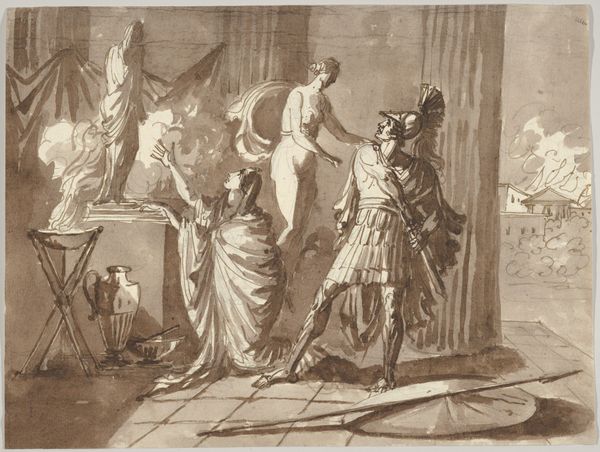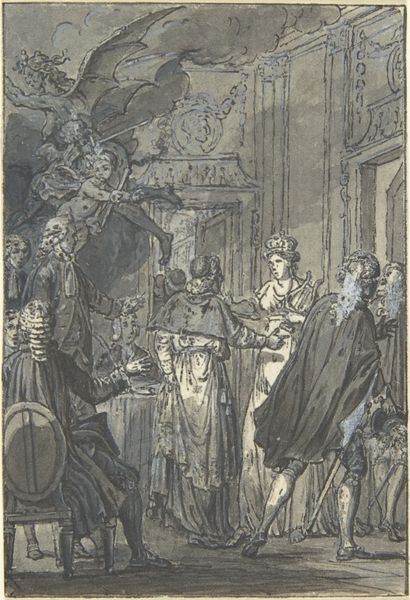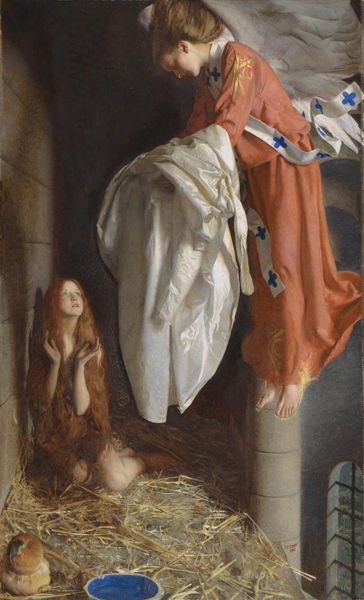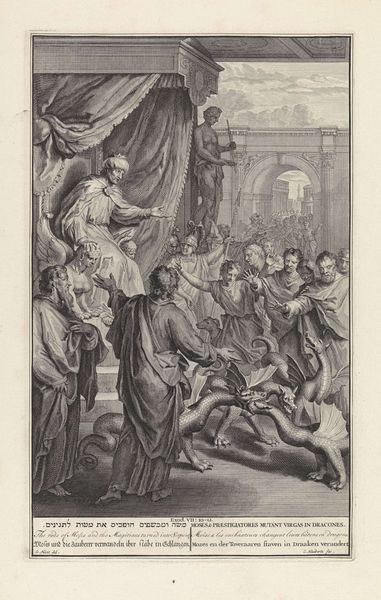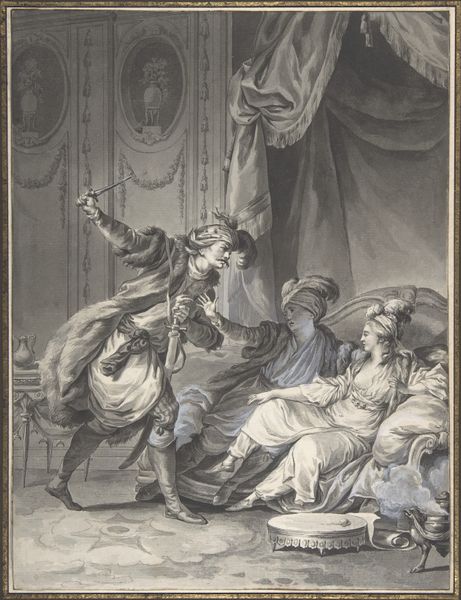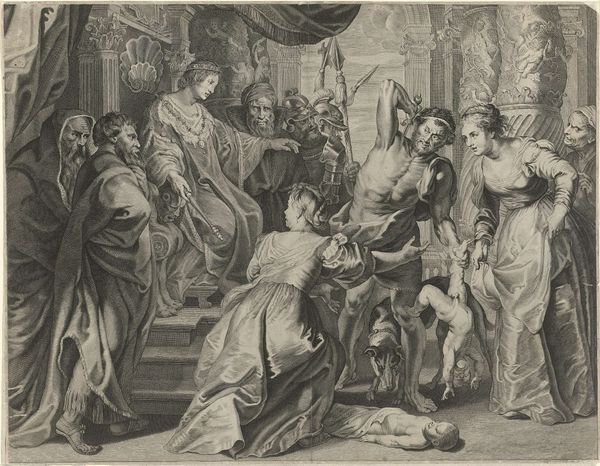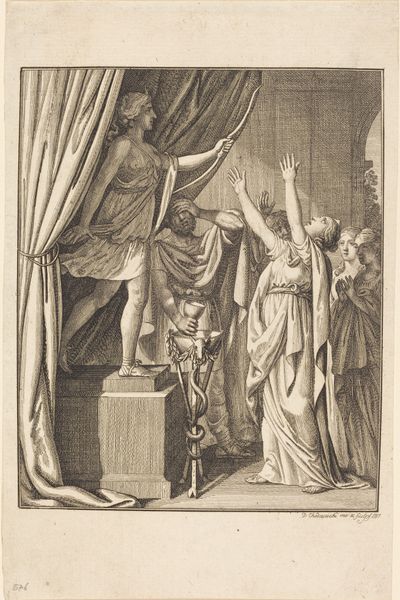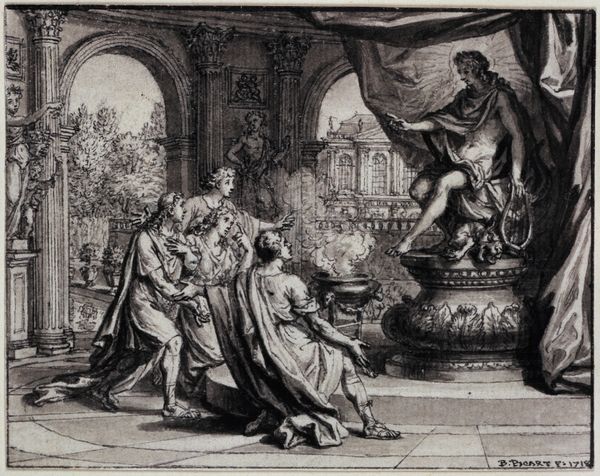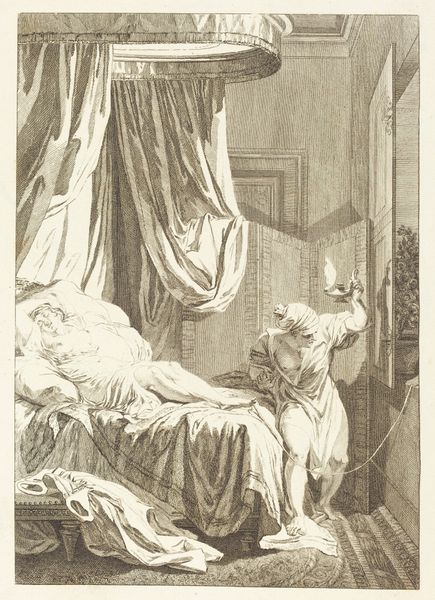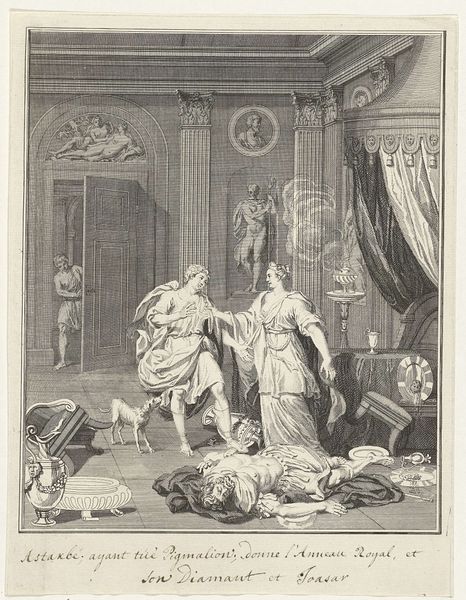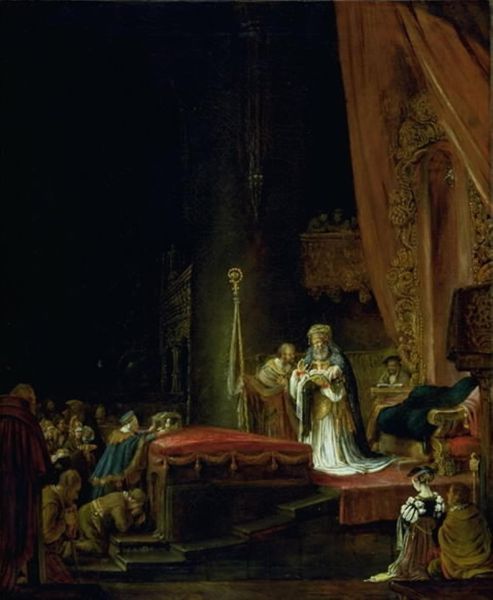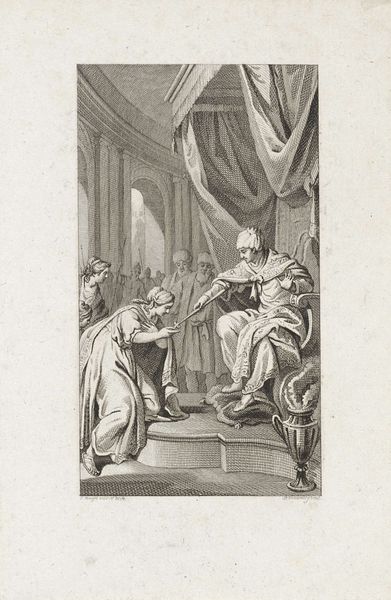
Dimensions: support: 1162 x 959 mm frame: 1515 x 1323 x 75 mm
Copyright: CC-BY-NC-ND 4.0 DEED, Photo: Tate
Curator: This painting by Charles Ricketts, called "Don Juan," currently resides in the Tate Collection. It's quite a dramatic scene, wouldn't you agree? Editor: Absolutely. The mood is heavy, almost theatrical, with that dramatic lighting and the fallen figure on the bed. Curator: Indeed. Ricketts, a significant figure in the Aesthetic movement, uses the Don Juan story as a vehicle to explore themes of morality, death, and the consequences of a life lived without restraint. The statue emerging from the curtain seems to signify retribution. Editor: It's fascinating how Ricketts uses the visual language of theatre – the draped curtain, the stage-like setting – to comment on the performance of masculinity and power in late Victorian society. I see this painting as less about a specific story and more about the politics of representation on the stage and in art. Curator: Interesting. For me, the repeating symbolism throughout the piece—the overturned chalice, the blood spatter—emphasizes the spiritual emptiness at the heart of Don Juan's libertine existence. Ricketts is suggesting a profound critique of hedonism. Editor: Perhaps. But I see a broader social commentary, a critique of the performance of power and the theatricality inherent in the social structures of the time. Regardless, it's an evocative piece. Curator: A powerful commentary for sure.
Comments
Join the conversation
Join millions of artists and users on Artera today and experience the ultimate creative platform.
tate 6 months ago
⋮
Ricketts painted a number of pictures inspired by the story of Don Juan based on Mozart’s opera, Bernard Shaw’s play Don Juan in Hell and the epic poem by Byron. Driven by his passions, Don Juan was described by Ricketts as ‘a profoundly significant figure, a kind of saint. Derider of all attempts to justify God’s way to man, the Don accepted the baseness of men, women, and institutions, and glorified in the power it gave him’. Gallery label, February 2004

